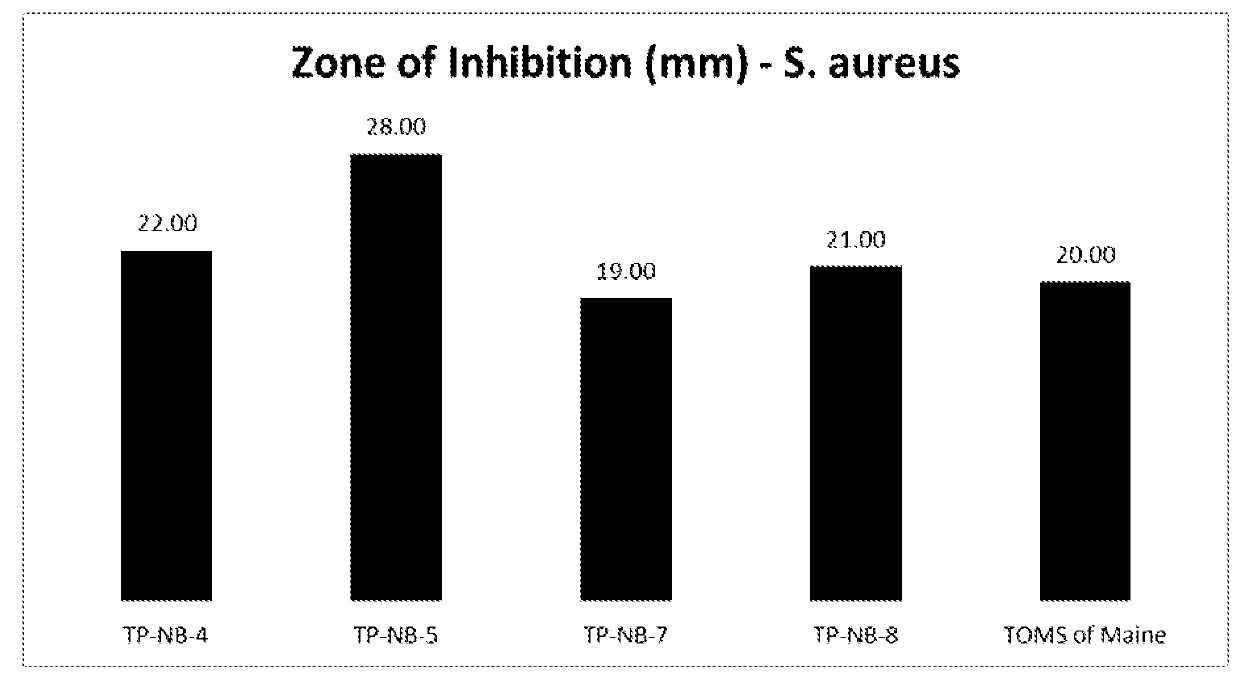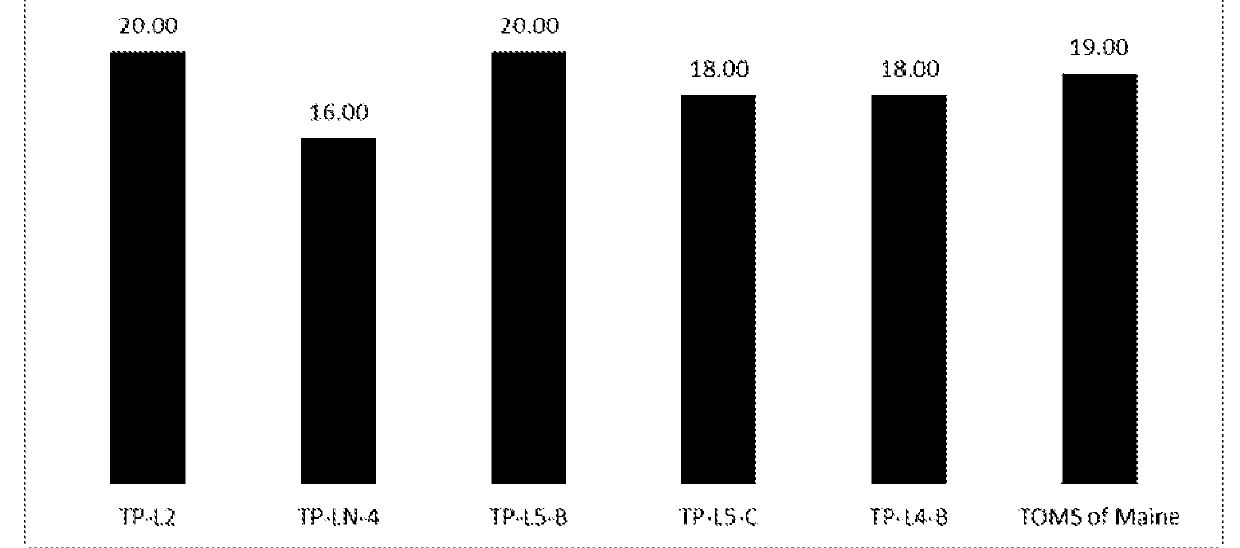Alcohol-free botanical oral care products
a botanical and composition technology, applied in the field of alcohol-free botanical oral care compositions, can solve the problems of weakened general health, death, debility and denture wearing, etc., and achieve the effect of improving antibacterial efficacy and improving antimicrobial efficiency
- Summary
- Abstract
- Description
- Claims
- Application Information
AI Technical Summary
Benefits of technology
Problems solved by technology
Method used
Image
Examples
example 1a
Oral Rinse Base
[0075]An oral rinse base (“Base”) was prepared as follows:
Ingredient% w / wWater69.4Pluronic F-1271Citric acid0.1Sorbitol7Xylitol5Glycerin8Propylene glycol2Plantasol ® caprylyl capryl glucoside0.5Total Oral Rinse Base93
[0076]Oral rinses were prepared as follows (for combination with the oral rinse base):
Oral Rinse 1
[0077]
Base93Zemea ® (1,3 Propanediol)4Thymol0.07Menthol0.07Plantasol ® caprylyl capryl glucoside0.5Spearmint oil0.05Grapefruit Extract0.8Calendula extracts1
[0078]Make the volume to 100gm with water.
[0079]Note: All the formulations below are adjusted to 100% with water.
Oral rinse 1 C (Oral rinse 1+0.05% chlorhexidine)
Base93Zemea ® (1,3 propanediol)4Thymol0.07Menthol0.07Plantasol ® caprylyl capryl glucoside0.5Spearmint oil0.05Grapefruit Extract0.8Calendula extract1Chlorhexidine gluconate0.05
Oral rinse 92 (Oral rinse 1 and 0.1% pomegranate)
Base93Zemea ® (1,3 Propanediol)4Thymol0.07Menthol0.07Plantasol ® caprylyl capryl glucoside0.5Spearmint oil0.05Grapefruit Ext...
example 1b
Effect of Concentration of Solubilizers and Surfactants Used in Oral Rinse on the Antibacterial Efficacy
[0094]In accordance with certain embodiments of the present technology, the following formulations were made and tested using the Rapid kill test method.
[0095]Rapid kill (20 seconds) test tube method described in ASTM-E2783-1198751-1 (suspension test).
[0096]In vitro rapid-kill test was carried out according to ASTM E2783-11; 108 CFU mL−1 microbial culture (S. aureus) were prepared in a TSA media in order to determine the antimicrobial activity of oral rinses. 0.9 mL oral rinse was kept in contact with 0.1 mL microbial cultures for 20 seconds and subsequently neutralized using drug inactivating solution (DE).
[0097]After serial dilution with DE, 0.5 mL dilutions were plated on Trypticase agar plates, incubated at 37° C. for 24 to 48 hours. Colony counts were determined and the log reduction of counts from control sample was calculated.
[0098]PBS was used as a control. In this study, ...
example 2
[0101]Another formulation was prepared, which contained lower concentrations of Thymol and Menthol and eucalyptus oil and eucalyptol (BOR-PC-8). BOR-PC-7D and BOR-PC-8 were evaluated for their antimicrobial efficacy and compared with that of other commercial oral rinses. Results are shown in Table 2.
TABLE 2IngredientBOR-PC-8Water73.87Pomegranate extract0.2Sorbitan monolaurate0.5solubilizer caprylyl capryl glucoside0.6Benzoic Acid0.1Sodium benzoate0.1Sorbitol4Xylitol3Grapefruit Seed Extract0.8Propanediol4Glycerin12.5Thymol0.064Menthol0.042Peppermint oil0.04Methyl Salicylate0.06Spearmint0.04Eucalyptus Oil0.08Total100
PUM
| Property | Measurement | Unit |
|---|---|---|
| Length | aaaaa | aaaaa |
| Fraction | aaaaa | aaaaa |
| Fraction | aaaaa | aaaaa |
Abstract
Description
Claims
Application Information
 Login to View More
Login to View More - R&D
- Intellectual Property
- Life Sciences
- Materials
- Tech Scout
- Unparalleled Data Quality
- Higher Quality Content
- 60% Fewer Hallucinations
Browse by: Latest US Patents, China's latest patents, Technical Efficacy Thesaurus, Application Domain, Technology Topic, Popular Technical Reports.
© 2025 PatSnap. All rights reserved.Legal|Privacy policy|Modern Slavery Act Transparency Statement|Sitemap|About US| Contact US: help@patsnap.com



